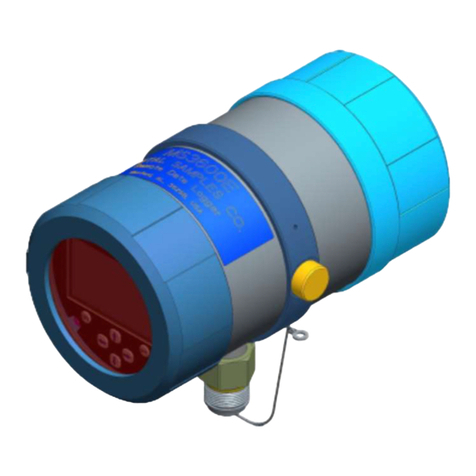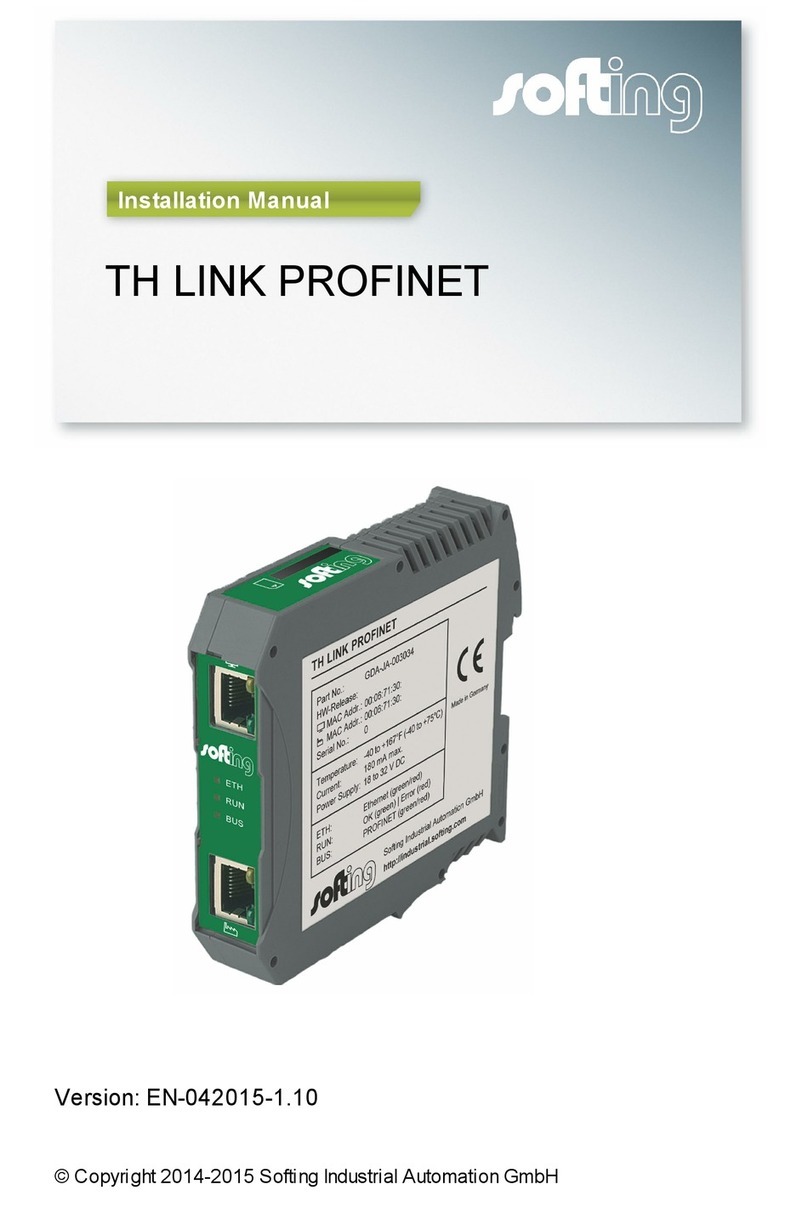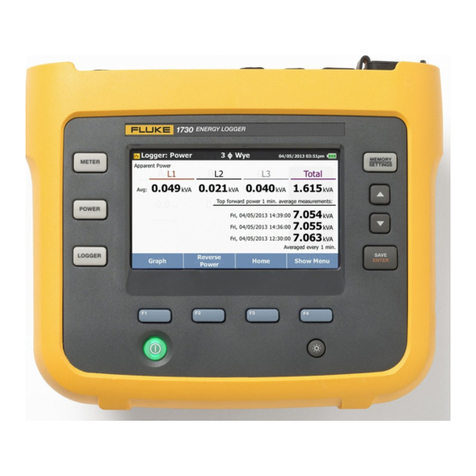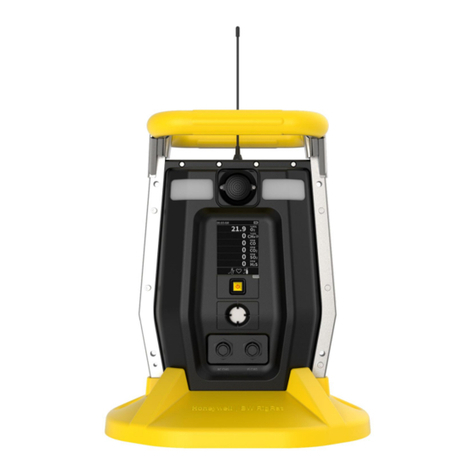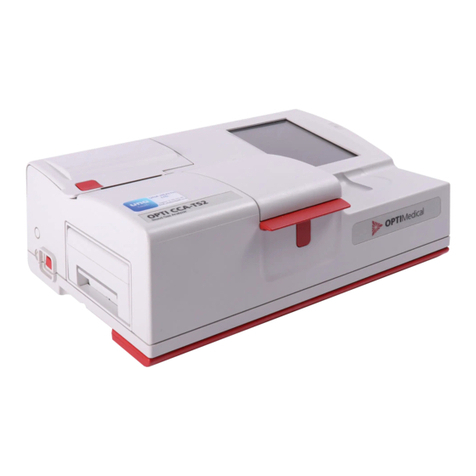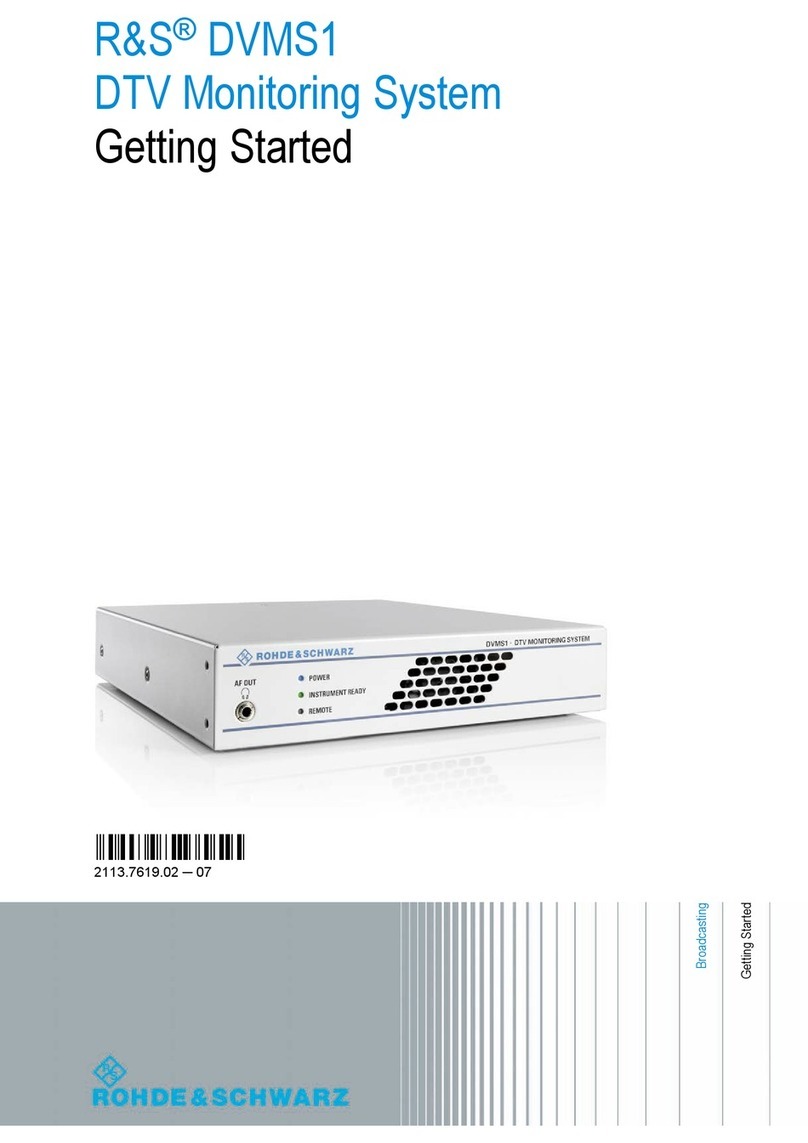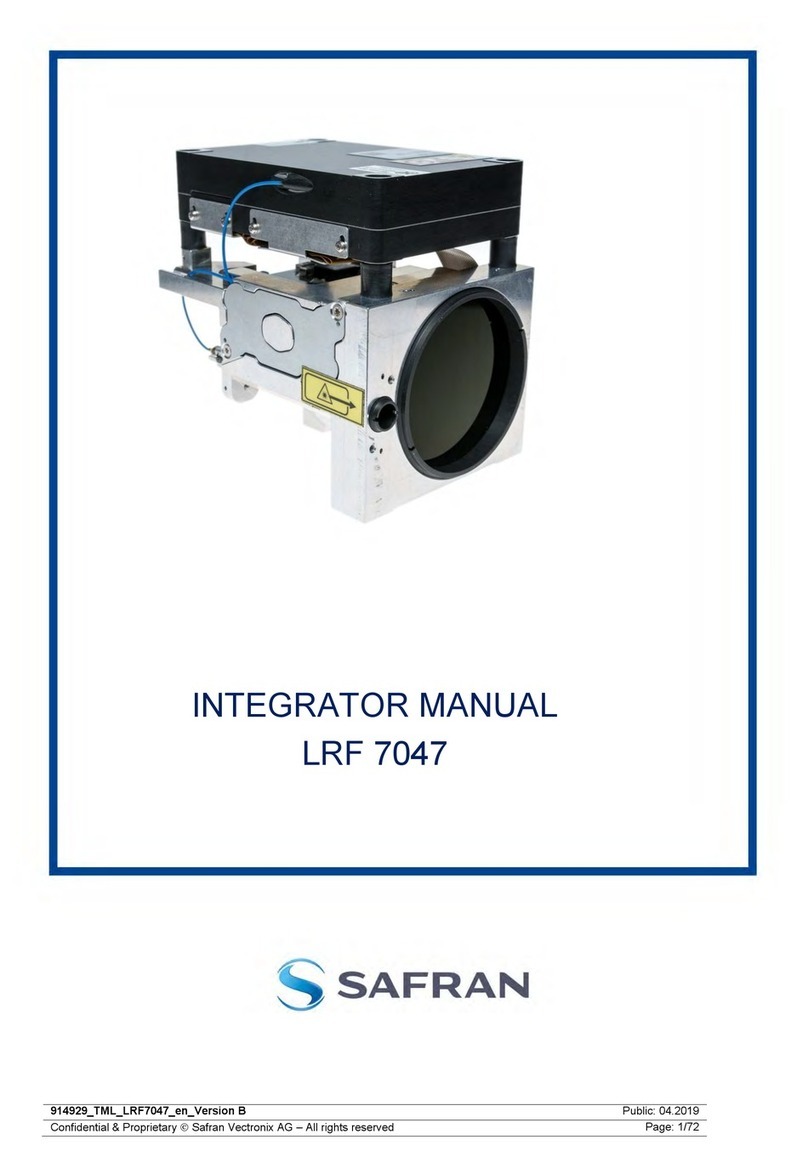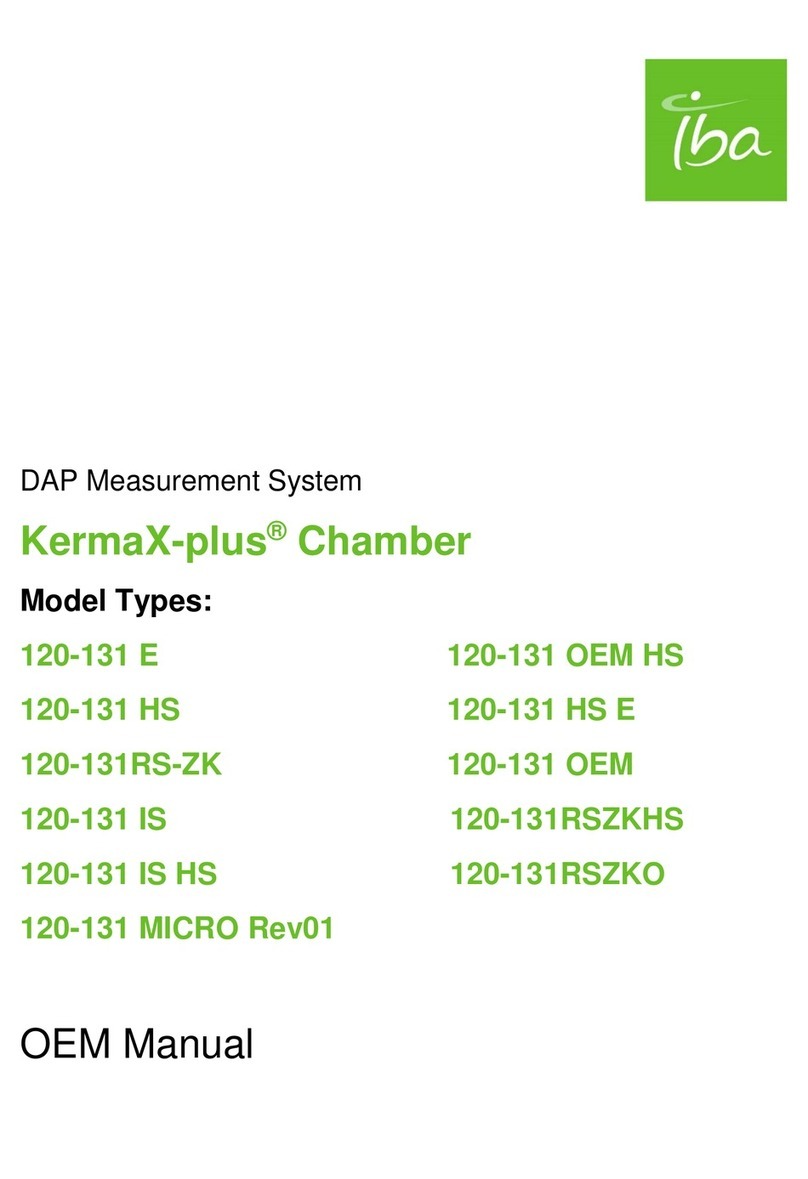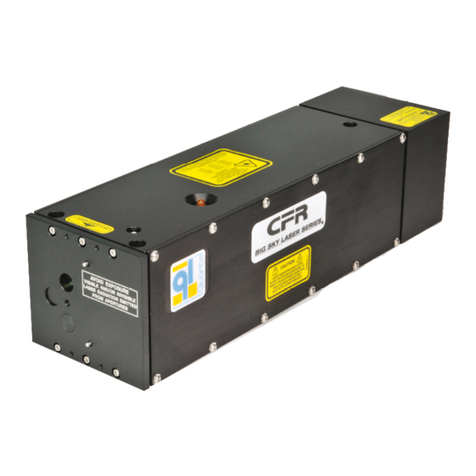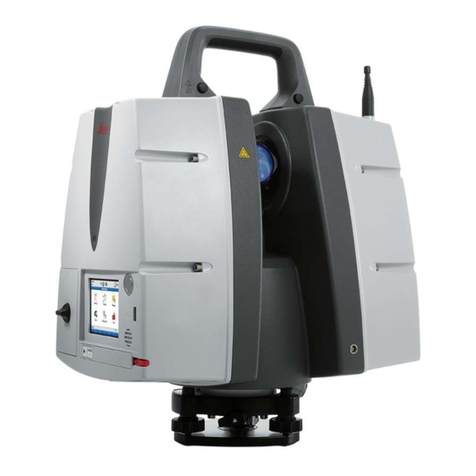Metal Samples MS1000 User manual

MS1000
Corrosion Meter
Owner’s Manual
Metal Samples
A Division of Alabama Specialty Products, Inc.
152 Metal Samples Rd., Munford, AL 36268
Phone: (256) 358-4202 Fax: (256) 358-4515


Table of Contents
I. Introduction .....................................................................1
A. Background ...................................................................1
B. InstrumentCapabilities ...................................................2
C. ApplicationsfortheMS1000 .........................................6
II. MS1000Specifications and Features ..............................7
III. MS1000Operation ...........................................................9
A. Test Readings ................................................................9
B. DataAcquisition .............................................................9
1. InstantaneousCorrosionRateMeasurements ............9
2. ZRAandEPRMeasurements .................................10
C. Electrode Installation, ReplacementandCare ...............10
D. CorrectingforLowSolutionConductivity Effects.......... 11
IV. UNSConstantTable.......................................................14
V. Maintenance ...................................................................16
VI. Troubleshooting ..............................................................16
VII. ReplacementParts .........................................................18
VIII.Warranty ........................................................................20
IX. References......................................................................21
MS1000 manual - rev. 15.12


I. Introduction
A. Background
TheMS1000isaportable,hand-held,battery-poweredcorrosion
meter. Thisversatileinstrumentmeasurestheinstantaneouscorrosion
ratewiththe LinearPolarizationResistance(LPR) technique. Italso
measuresthecurrentflowingbetweenelectrodes intheshort-circuited
conditionwithahighprecisionzeroresistanceammeter(ZRA). The
MS1000cananalyze two-electrodelinearpolarizationresistanceor
galvanictypeprobes.
Theprincipleuse ofthisinstrument istomeasurecorrosion ratesunder
variousconditionsintheplant,field,orlab.Inadditiontousingthis
instrumenttomonitor corrosionrates,corrosionengineers canalsouse
theMS1000to monitorinhibitoreffectiveness, identityprocessupsets,
identifylocalizedcorrosionevents,andevaluatecorrectiveactionsin
realtime. Thesemeasurements areveryimportantsince achangeinthe
processconditionscanleadto dramatic changes intheobserved
corrosionrate.
1

B. Instrument Capabilities
Instantaneous Corrosion Rate Measurements
Instantaneouscorrosionrate measurementsaremade withthelinear
polarizationresistance(LPR)technique. Thistechnique isareliable
electrochemicalprocedurebased onprinciplesoutlinedinASTMG59
StandardPracticeforConductingPotentiodynamicPolarizationResis-
tanceMeasurements.1Anexcellenttechnicalreviewofthistechniqueis
givenelsewherebyMansfeld.2,3
Thedeterminationof a corrosionratefromthe parameters measured
withcorrosionprobesdependsonFaraday’slaw. Themassloss,
current,potential,andchanges inthesevariablesareconverted intoa
corrosionrate. ASTMG102StandardPractice for Calculation of
CorrosionRatesandRelatedInformationfrom ElectrochemicalMea-
surementsprovides allnecessaryinformationforthe directcalculationof
thecorrosionrate.4
ThemethodusedbytheMS1000 for calculating the corrosionrateisas
follows. Alow amplitudedcvoltageisapplied across theelectrodes
andthenthe resultingcurrent,normalized tocurrentdensity, ismea-
sured. Thevoltageis heldconstantforthirty secondsbeforemeasuring
thecurrent sothat anycapacitanceinthe oxidelayerwillbe fully
charged. Thepolarityofthe applied voltage isthenchangedandthe
measurementcycleis repeated. Polarityisreversedto minimizepoten-
tialerrorsdue topossibleelectrodedissimilaritiesorchangesin the
opencircuitpotentialoftheelectrodesduringthemeasurement.
Thepolarizationresistance,Rp, ofthecorrodingelectrodes is calcu-
latedfromtheslope of thepotential-currentdensityplot. Rpisdefined
as:
Rp=E
i
2

where Eis thepolarizationfrom theopencircuitpotential ofthe
electrodesandiisthemeasuredcurrentdensityat E.Sternand
Gearyshowedthat thereisalinear relationship betweenpotentialand
appliedcurrentatpotentialsonlyslightlyremovedfromthecorrosion
potential.1Basedonthe kineticsofelectrochemicalreactions and
conceptsofmixedpotentialtheory,asdiscussed byWagnerandTraud,
anequationwas derivedwhichrelatedthe polarizationresistancetothe
corrosioncurrentdensity,icorr.6Thecorrosion currentdensityiscalcu-
latedas:
whereßaandßc aretheanodicandcathodicTafelconstants (ie., the
slopesofthe anodicandcathodicpolarization curvesintheTafel
region).
The instantaneouscorrosionrate inmilsperyear (mpy)isdetermined
fromicorr withthefollowingequation:
icorr =2.303Rp(ßa+ ßc)
ßaßc
whereEWis theequivalentweight, Kisaconstant forunitsconversion,
and isthedensity. Theequivalentweightdepends upon the composi-
tionofthealloy. Guidelinesfordeterminingtheequivalentweightare
giveninASTMG102.4
Notethatthis instrument hasbeendesignedto calculatethecorrosion
rateofcarbonsteel and commongradesofstainlesssteel in milsper
year. Inother words, the programmedvaluesoftheTafelslopes,
equivalentweight,anddensityaretypical forcarbonsteelandcommon
gradesofstainlesssteel. Multiplicationfactorsfor copper,admiralty
brass,andleadare includedonthefrontpanel of theinstrument.
COR(mpy) =icorr • EW • K
3

Theinstrumentisprogrammedforelectrodeswithsurfaceareas offive
cm2. Multiplicationfactorsarealsoincludedforflushmountelectrodes
withsurfaceareasof0.5cm2.
Zero Resistance Ammeter (ZRA) and Equivalent Pitting Rate
Ahighprecisionzeroresistanceammeterisusedformonitoring the
short-circuitcurrentbetweenelectrodes. Thistotalcurrent flowing
betweentheelectrodes intheshort-circuitedcondition ismonitored.
Thecurrentis displayedinmicroamps. Thezero resistanceammeter
(ZRA)functionmayalsobeusedtomonitorthe galvaniccurrent
betweenelectrodesof differentalloysorthe areaeffectofgalvanic
corrosion.
Generally,ifthemagnitudeoftheZRAreading dividedby2islessthan
thecorrosionrate, then pittingmaybeoccurring but thepitswillprob-
ablybeshallow andwide;however,pittingmaybe aseriousconcernif
theZRA/2 isgreaterthanthecorrosionrate.
Faraday’slaw may be used tocalculatethemassofmateriallostasa
resultof thelocalizedcorrosionasfollows:
W=[( ZRA)/n] • t • EW
F
whereWisthemassofthecorrodedmetal in grams, ( ZRA)/nis the
time-integratedZRAdivided by n,thenumber ofdaysofexposure,tis
thetime thecurrentisflowingin seconds,EWistheequivalentweight
aspreviouslydefined,andF istheFaraday constant, 96480Coulombs/
mol. Themassofthecorrodedmaterialmaybeusedto calculate a
4

corrosionrate,designatedasthe equivalent pitting rate, basedonthe
ZRA. Thisequivalentpittingrateisdefinedas:
whereEPRisthe equivalentpittingrateinmpy,K’isa constantfor
unitsconversion,Aisthe surface areaincm2, Wis the masslossin
grams, tisthetimeofexposureinseconds,and isthedensity of the
alloyingrams/cm3.
Additionaltechnicalinformationonthisinstrumenthasbeenpublishedin
theProceedingsofthe1994 InternationalWaterConference.7
EPR =K’ • W
A • t •
5

C. ApplicationsfortheMS1000
• Measuretheinstantaneous corrosionrateinaqueous solutions.
Forexample,thecontent anddosageofinhibitorsin water
treatmentfacilitiesandchemicalprocessplantscanbemonitored
andoptimized.
• Monitorthe actuallifetimeofplantequipment.Corrosion
monitoringprovidesdatathatmaybe combinedwithother forms
ofdatatoestimatethelifetimeofequipmentintheplant.
• Detectionoflocalizedcorrosion due toprocessconditionsor
upsets.
• Evaluatealternatematerials foraspecificpurpose. Optionfor
otheralloys,heat treatments,orfinishesmay beevaluatedand
comparedtotheperformance ofthespecificalloyconsidered.
• Analyzegalvanic probesandmeasurethegalvaniccurrent
betweenelectrodes. Areaeffects ingalvaniccorrosioncanalso
beinvestigated.
6

Model
MS1000 - LPR Corrosion Meter (Ordering # IN1000)
PhysicalData
InstrumentWeight: 0.84 lb. (0.38 Kg)
TotalWeight w/CarryingCase
andAccessories: 5.20lb.(2.36Kg)Instrument
Dimensions: 7.63"H x 4.15"W x 1.3"D
(19.38cmx10.54cm x 3.30cm)
CarryingCaseDimensions: 10"H x 11.75"W x 5.4"D
(25.40cmx 29.85cm x 13.72cm)
OperatingTemperature: 32° to 122°F (0° to 50°C)
StorageTemperature: -4° to 158°F (-20° to 70°C)
PerformanceData
MeasurementType: 2-ElectrodeLPR,Galvanic
Range: 2-Electrode: 0-40mpy
Galvanic: 0-80µA
Resolution: 2-Electrode: 0.02mpy
Galvanic: 0.04µA
CycleTime: CorrosionRate: 60sec
ZRA: 30 sec
ElectricalData
PowerRequirements: One 9V RechargeableBattery
MaximumProbe CableDistance: 2000 ft (609.6 m)
C. MS1000 Specifications and Features
7

Special Features
• Microprocessor-basedelectronics
•Functionkeyinterface using4-keykeypadand4-line LCDdisplay
• Low-batterydetection
• Portable
Accessory Items
CarryingCase, 10' ProbeCable, Battery Charger, Lightweight
Protective Case, Meter Prover, Operation Manual
8

III. MS1000Operation
A. Test Readings
TheMS1000issuppliedwitha test probe to checkproperfunctioning
ofthecableandinstrument. Inorder to guarantee the accuracy ofyour
data,checktheinstrument readings atroomtemperaturewiththe test
probepriorto taking measurements.
Thetestprobe is usedtoverifycorrect instrumentoperationasfollows:
1. Insert test probe into cable.
2. Press ON.
3. Press COR tomeasuretheinstantaneouscorrosionrate.After
60secondsthedisplay should read:
CORROSION RATE = 5.00 ± 0.05 mpy
4. PressZRAto measure the current imbalance. After 30seconds
thedisplayshouldread:
ZRA = 0.00 ± 0.12 µA
B. Data Acquisition
1. Instantaneous Corrosion Rate Measurements
Corrosionratemeasurements maybecollectedas follows:
a. Connecttheinstrumentcabletothedesiredprobe.
b. Press ON to turn the MS1000 on.
c. Press CORtomeasuretheinstantaneouscorrosionrate.
d. A short beep willsoundafter60secondstoindicatethat the
measurementiscompleteandthemeasured corrosionratewill
bedisplayedonthescreen.
e. The measuredrateiscalculatedforcarbon steel. If another
9

electrodematerialwasused,theresult shouldbemultipliedby
theappropriatealloymultiplier. Fourcommonalloysarelisted
ontheMS1000keypad.Amorecomprehensive list is
providedon page 14.
2. ZRAand EPRMeasurements
Electrochemicalcurrentnoiseandequivalentpittingratemeasurements
maybecollectedasfollows:
a. Connect theinstrumentcabletothedesiredprobe.
b. Press ON to turn the MS1000 on.
c. Press ZRAtomeasurethecurrent imbalancebetweenthe
electrodes.
d. A short beep willsoundafter30secondstoindicatethat the
measurementiscompleteandthemeasuredZRAandEPR will
bedisplayedonthescreen.
C. Electrode Installation, Replacement, and Care
Theelectrodessuppliedfrom MetalSampleshavea600grit (ground)
surfacefinish. Theelectrodes are alsodegreasedandshipped in volatile
corrosioninhibitor(vci)bagsfor protection. Additionalcleaningofthe
elementspriortouseis not required. However,itisrecommendedthat
theelectrodesbepretreatedinthetestsolution of interest in order to
bringtheelectrode surfacestoequilibrium. Pretreatmentmaybe
conductedin afullstrengthmixtureofthesolutioninthesystem. Typical
pretreatmenttimesareatleast24 hours.
Theresultingdata generatedfromthe pretreatedelectrodeswillindicate
thecorrosiontrendsofthesystemmuchmore rapidly,usuallywithina
day, as opposed to as much as a week for untreated electrodes.
10

Newelectrodesare1.250"(31.75mm)inlengthand0.188"(4.76mm)
indiameter. Ascorrosionoccurs,theelectrodediameterdecreases. As
aresult,theelectrodesurfaceareadecreasesandthedistancebetween
theelectrodesincreases. These two factors are sources of error and
maydiminishthe accuracyofthemeasuredcorrosion rate. Therefore,it
isrecommendedthatthe electrodes bereplacedwhentheirdiameter
has decreased by 17%. In other words, the electrodes should be
replacedwhentheirdiameterhasdecreasedto0.156"(3.97mm).
Ifthe probe and electrodes are tobemoved,or if the electrodes
becomefouledwith corrosionproductsorsystemcontaminants,
removetheelectrodesfrom the probeandpolishthemto a dullshine
withwet600grit abrasive paper. Afterpolishing, rinse anddegrease
theelectrodespriortoreinstallation.
Note:Whenhandling electrodes, usecleanlatexgloves and paper
towels. Thiswillkeeptheelectrodesclean andfreefromcontaminating
oilydeposits.
D. Correcting for Low Solution Conductivity Effects
Lowsolution conductivityeffectsincreasetheapparentpolarization
resistance,thusyieldinganunderestimationof thecorrosionrate. The
effectofsolutionresistance isafunctionof thecellgeometry. Sincethe
cellgeometry(inthiscase,the electrodeconfigurationof thecorrosion
probe)remainsconstant, analyticalcorrectionmaybeperformed to
compensateforthis apparentincreaseinthepolarizationresistance.
Thefollowingequationmaybe usedtoapproximate themagnitudeof
thiseffect.
Rp= Ra-
whereRpis thetruepolarizationresistance,Rais theapparentpolariza-
tionresistanceasmeasured by theinstrument,listhe distance between
l
11

thetwoelectrodes incm,and isthesolutionconductivityinohms-1/
cm. Specificguidelinesforthiscorrectiontechniquearedetailedin
ASTM G102.4
Theaboveequation has beenusedtoanalyticallyderive acorrection
curveforlow solutionconductivityeffects. Thecurve is plottedasa
functionofthe corrosion rate,asmeasuredby the instrument,andthe
solutionconductivity. Thiscorrectioncurveisgivenin Figure3.
CorrosionRate(mpy) /SolutionConductivity (µmhos/cm)
Figure3-Multipliers for IRcorrection.
12

Anexampleofhow tousethecorrectioncurveis givenbelow.
Ifthe
Corrosion Rate (Instrument Reading) = 1.00 mpy
Solution Conductivity = 100 µmhos/cm
andthe
thenthevalueon the x-axis ofthegraphmaybecalculated as
10 -2
=
Corrosion Rate (mpy)
Solution Conductivity (µmhos/cm)
Referringtofigure3,avalueof10-2 onthex-axiscorrespondstoa
multiplierof1.3.
Therefore,thecorrosionrate, as corrected for IR drop in the electro-
lyte,istheproductof 1.3 and the measured corrosion rate. In other
words,
Corrected Corrosion Rate = 1.3 • 1.00 = 1.30 mpy
13

IV.UNSConstantTable
Thefollowinglistsmanyofthecommonconstructionalmetals/alloys
withtheirappropriatealloyconstants.
Alloy Alternate Major Constituents
UNS# Const. Designation (or common names)
F12101 1.0 - Gray Cast Iron
F13502 1.0 - Gray Cast Iron
G10100 1.0 AISI 1010 0.1% Carbon Steel
G10180 1.0 AISI 1018 0.18%Carbon Steel
G10200 1.0 AISI 1020 0.20%Carbon Steel
K03504 1.0 ASTMA105 0.35% Carbon Steel
K03006 1.0 ASTMA106 0.3% Carbon Steel
K02504 1.0 ASTMA53 0.25% Carbon Steel
K03011 1.0 ASTMA350LF2 0.3% Carbon Steel
K01800 1.0 ASTMA516 0.18% Carbon Steel
G41300 1.0 AISI 4130 1% Cr 0.2% Mo Steel
K41545 1.0 ASTMA199 5% Cr 0.5%Mo.Steel
S50400 1.0 ASTMA199 (T9) 9% Cr 1.0%Mo.Steel
S30400 1.0 AISI304 18%Cr 8%NiS.S.
S30403 1.0 AISI304L 18%Cr8% Ni (Low Carbon) S.S.
S31600 1.0 AISI316 18/Cr10/Ni/3/MoS.S.
S31603 1.0 AISI316L (LowCarbon)S.S.
S32100 1.0 AISI 321 Ti Stabilized 18/8 S.S.
S41000 1.0 AISI410 12%Cr.S.S.
S43000 1.0 AISI430 17%Cr.S.S.
S31200 1.0 ASTMA182 26Cr6NiDuplexSS
S31803 1.0 ASTMA276 22Cr5Ni3Mo.DuplexS.S.
C11000 2.0 AMS4500 99.90Copper
C26000 1.8 AMS4505 70-30Brass
C28000 1.8 ASMESB111 Muntz Metal (60% Cu)
14

Alloy Alternate Major Constituents
UNS# Const. Designation (or common names)
C23000 1.9 ASMEB16.22 85-15Brass
C63000 1.9 AMS4640 AluminumBronze
C68700 1.9 ASMESB111 Aluminum Brass (Arsenical)
C44300 1.8 ASMEB111 Admiralty Brass
C70690 1.9 ASTMF96 90-10CopperNickel
C71590 1.6 ASTMF96 70-30CopperNickel
N04400 1.2 AMS4544 Monel 400
N08825 1.0 ASMEB163 Incoloy 825
N06600 1.0 AMS5540 Inconel 600
N06625 1.0 AMS5401 Inconel 625
N10001 1.0 AMS5396 Hastelloy B
N10002 1.0 AMS5388 Hastelloy C
N10276 1.0 ASMEB366 HastelloyC-276
N02201 0.9 AMS5553 Nickel201
N08904 1.0 ASMEB625 23-1-4-25Cr-Cu-Mo-Ni
Z13001 1.3 ASTMB6 99.990 Zinc
R05200 0.6 ASTMB364/365 Tantalum
R50250 0.7 ASTMF67 Titanium
R60701 1.0 ASTMB493 Zirconium
A96061 0.9 AA6061 Aluminum
15

V. Maintenance
Theonlymaintenance itemintheMS1000 isthe9volt rechargeable
battery. Abatterychargerisincludedwiththeinstrumenttofacilitate
recharging. Thebatterywillrechargetofull capacityinafewhours.
TheLEDindicator onthebatterycharger willturnredwhile thebattery
ischarging,andwillturn greenwhenthe batteryisfully charged.Over
timetherechargeable batterymayrequirereplacement.It shouldbe
replacedwitharechargeablebatteryofthesame type.Alternately, a
standardalkalinebatterycan beinstalled,butyoushouldNOT attempt
torechargeit.Attempting to rechargeanalkaline batterymaycauseitto
leakandcausedamage totheinstrument.
VI. Troubleshooting
If the corrosion rate 5.00 ± 0.05 mpy when the calibration probe
is connected
Checkthefollowingitems:
1. Isthecalibrationprobecompletelypluggedintothe
cableassembly?
2. Is thecableassemblypluggedintothe “Probe”port
ontheinstrument?
If the above methods do not cause the corrosion rate to be 5.00 ± 0.05
mpy,itispossiblethatthe cable assembly hasbeendamaged. Youmay
checkthecableassembly for properoperationasfollows:
1. Unplug theinstrumentfromthe poweroutletand turnthepower
switchontheinsidefrontpaneltothe“off”position.
2. Unplug thecableassemblyfrom the“probe”connection onthe
instrument.
3. Place a 1000 Ohm resistor across thebottomtwopins of the
probeconnectorontheinstrument OR use jumper wires and
16
Table of contents
Other Metal Samples Measuring Instrument manuals
